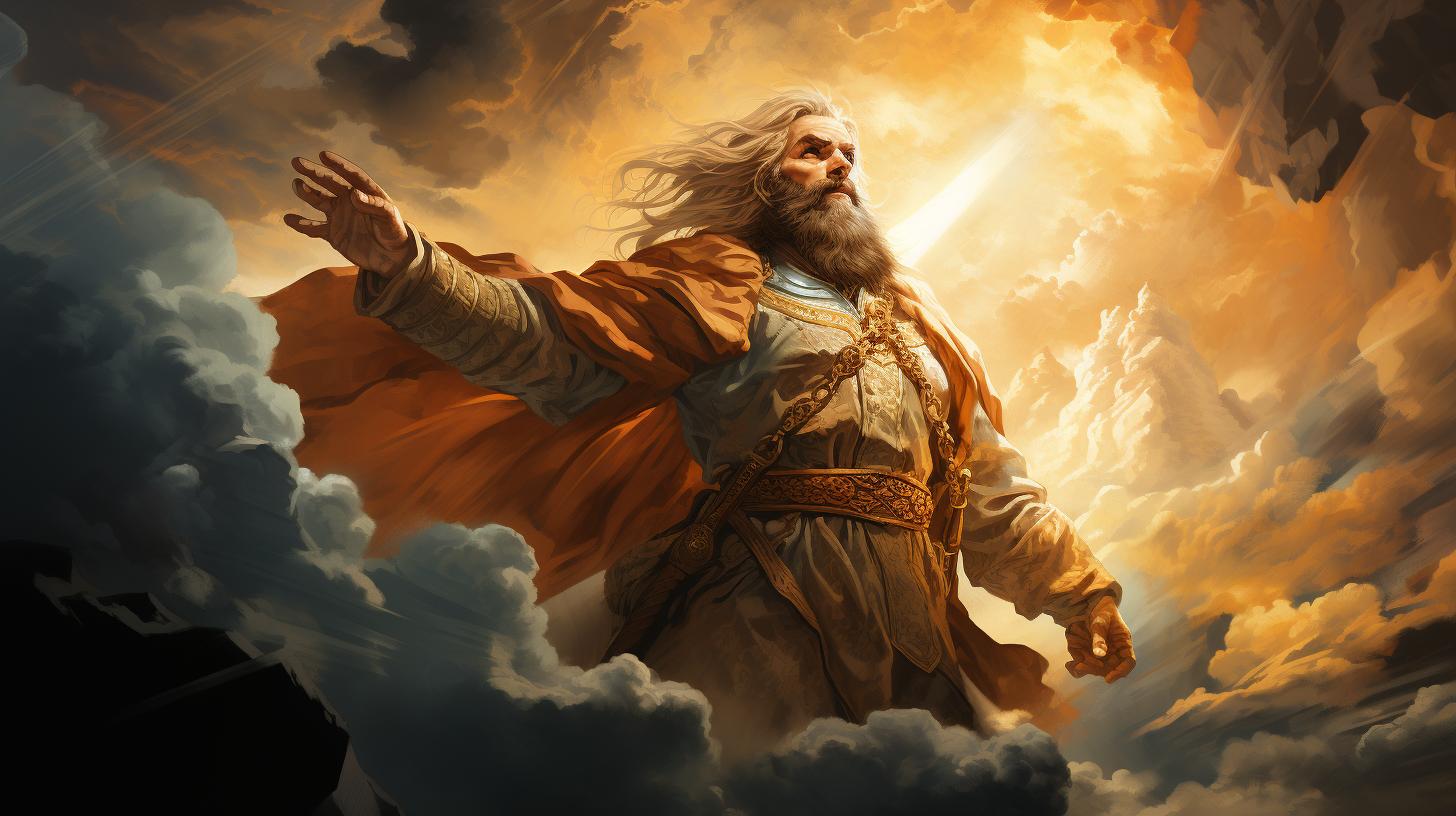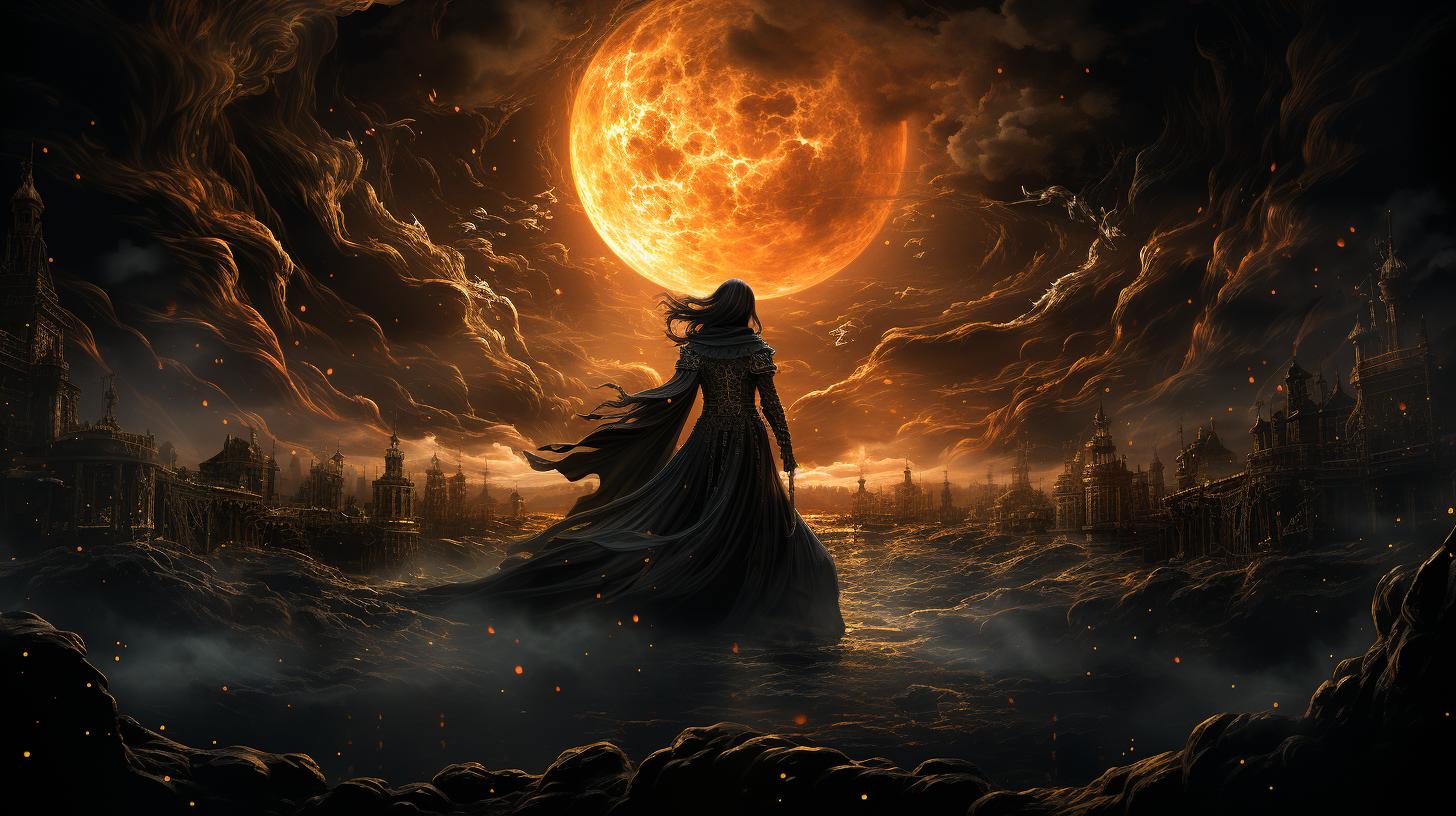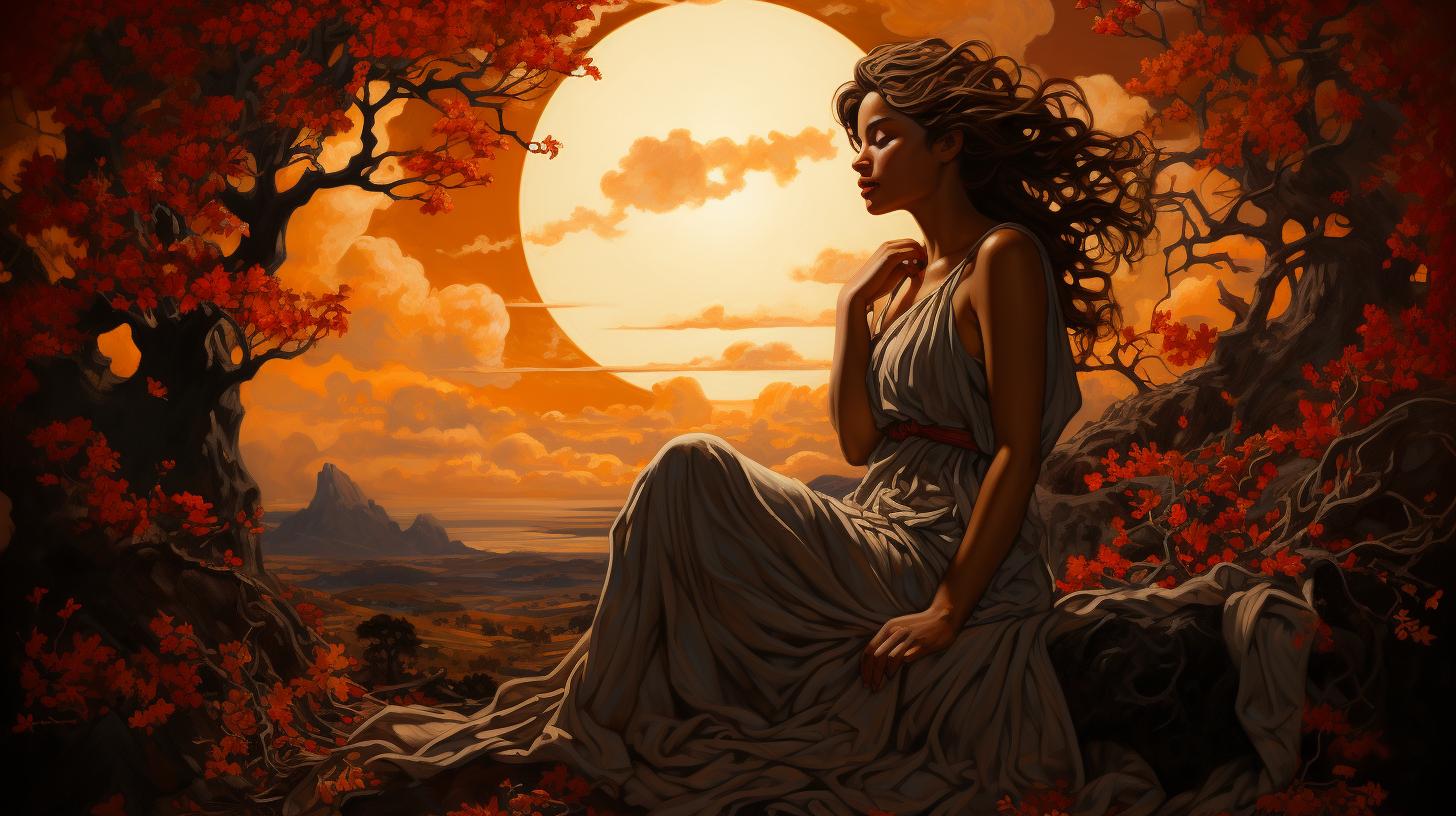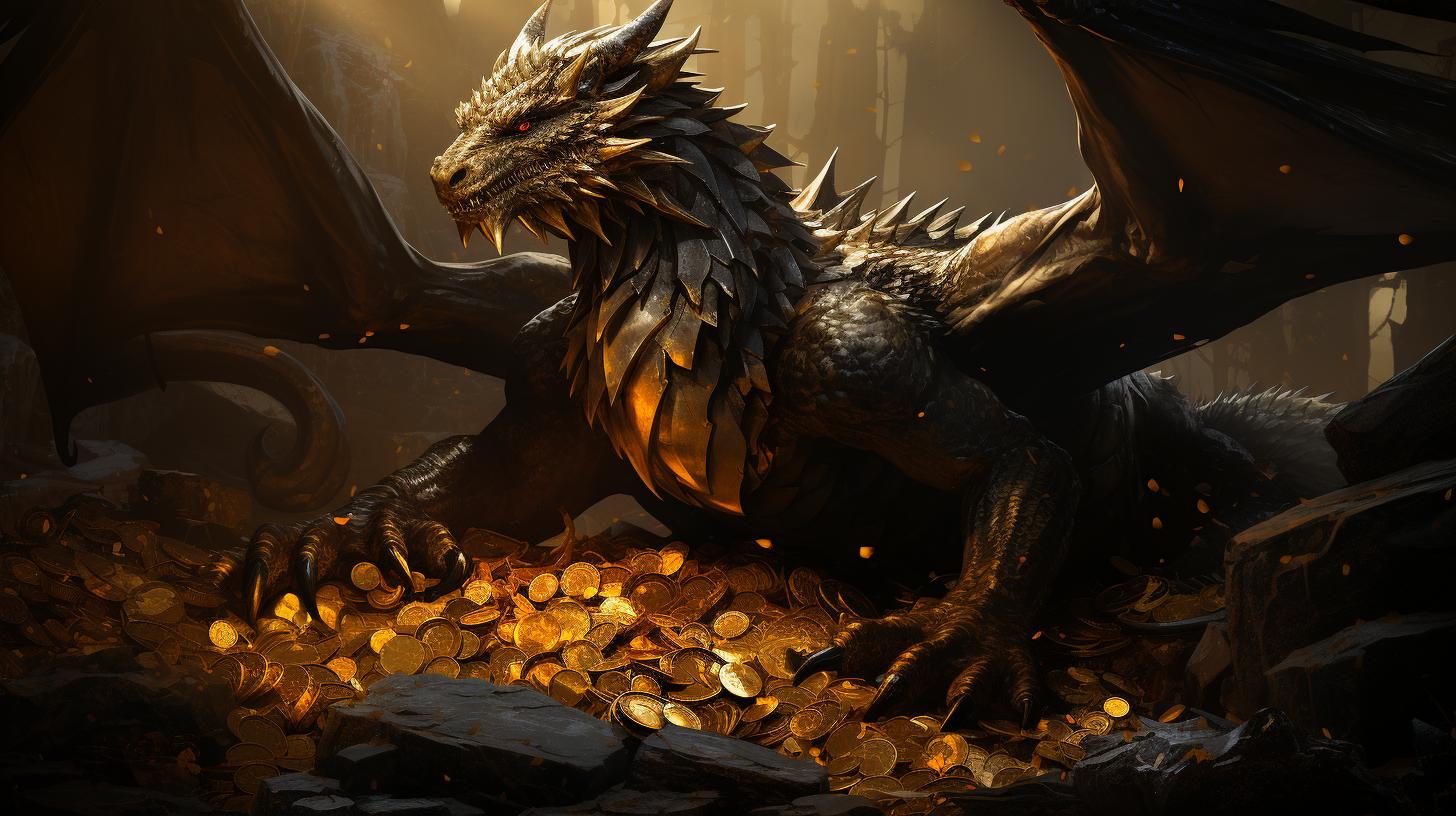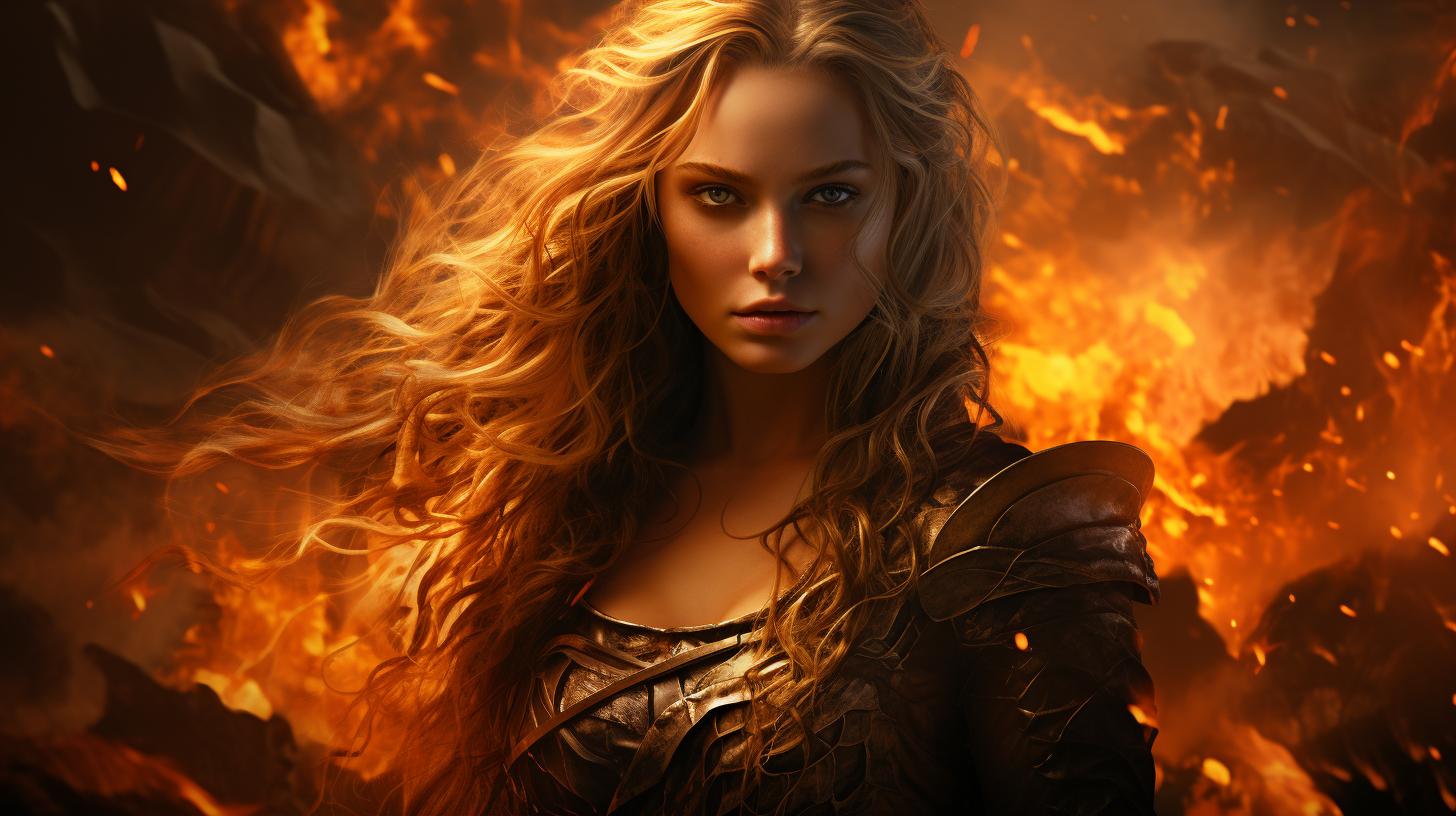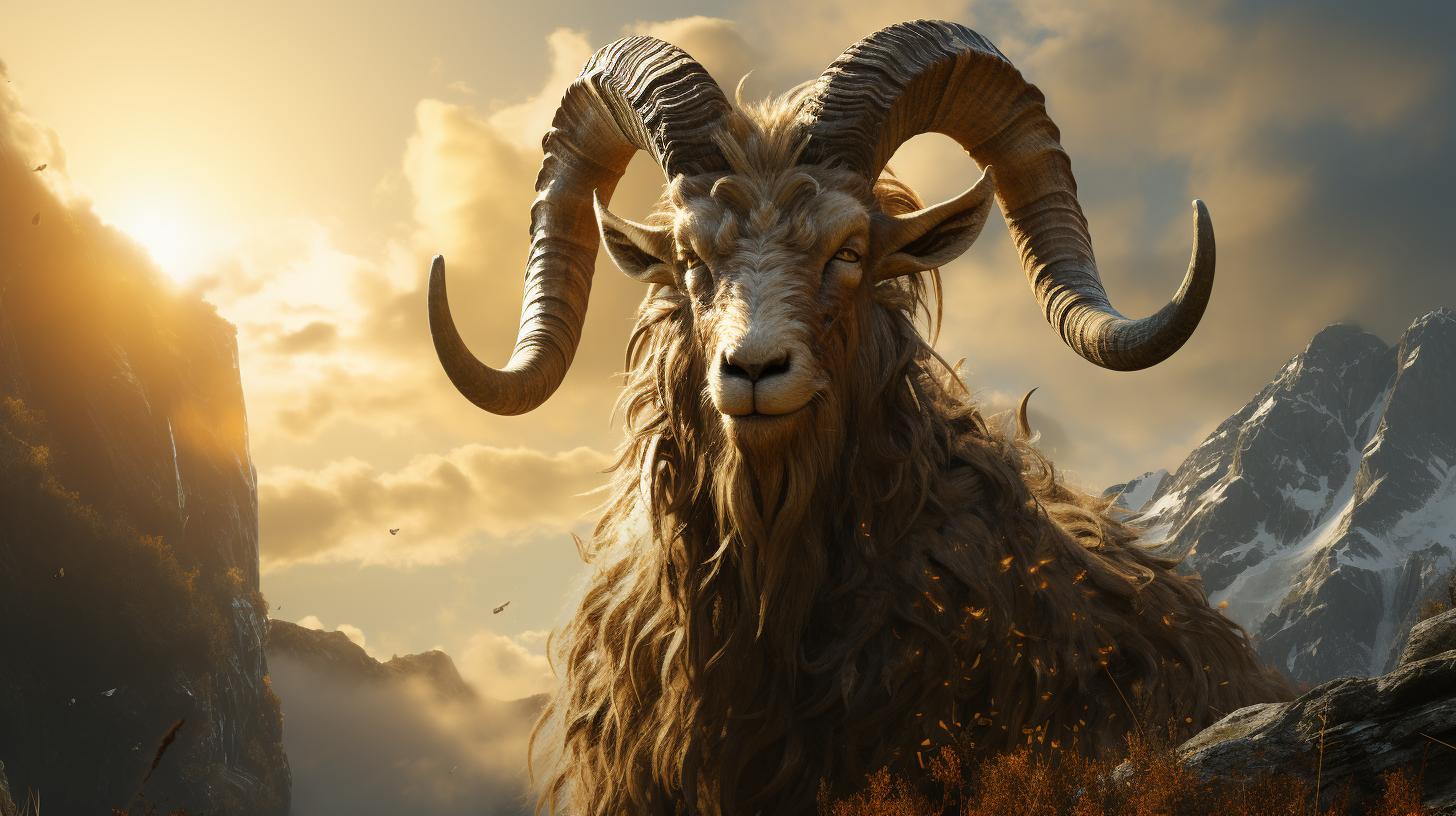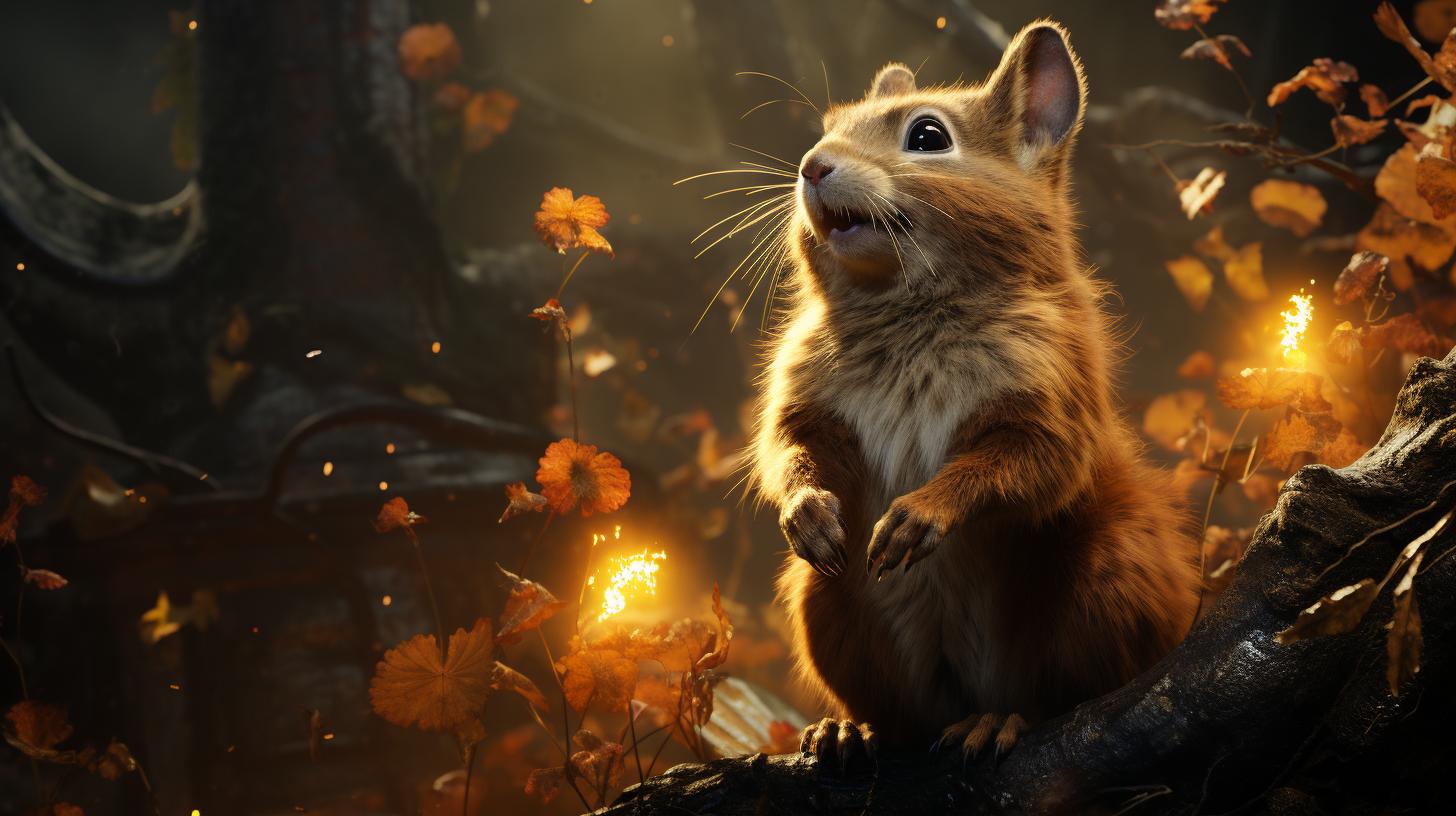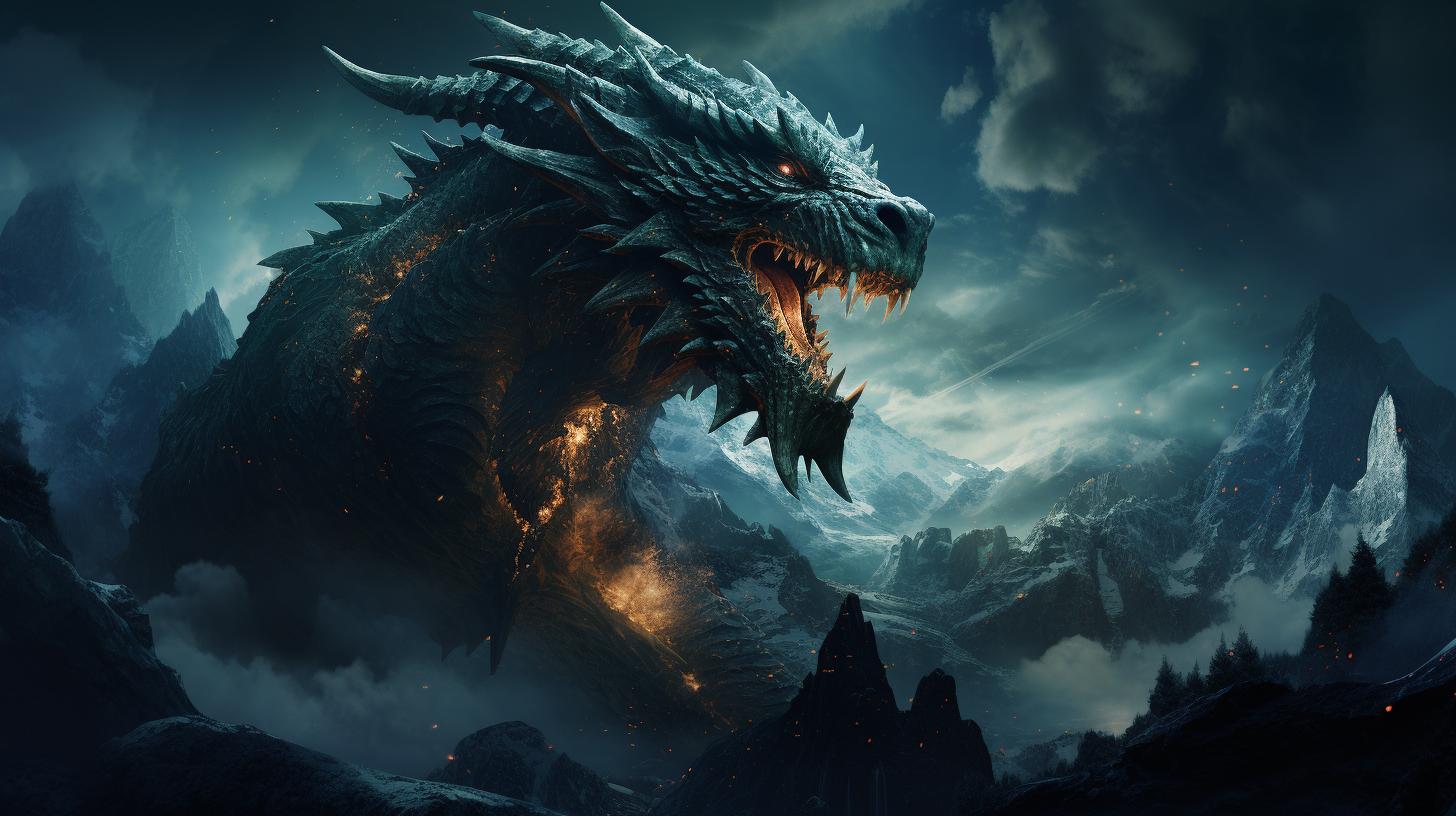Angrboda and Loki: The Mythical Connection Exploring Chaos and Destruction in Norse Mythology
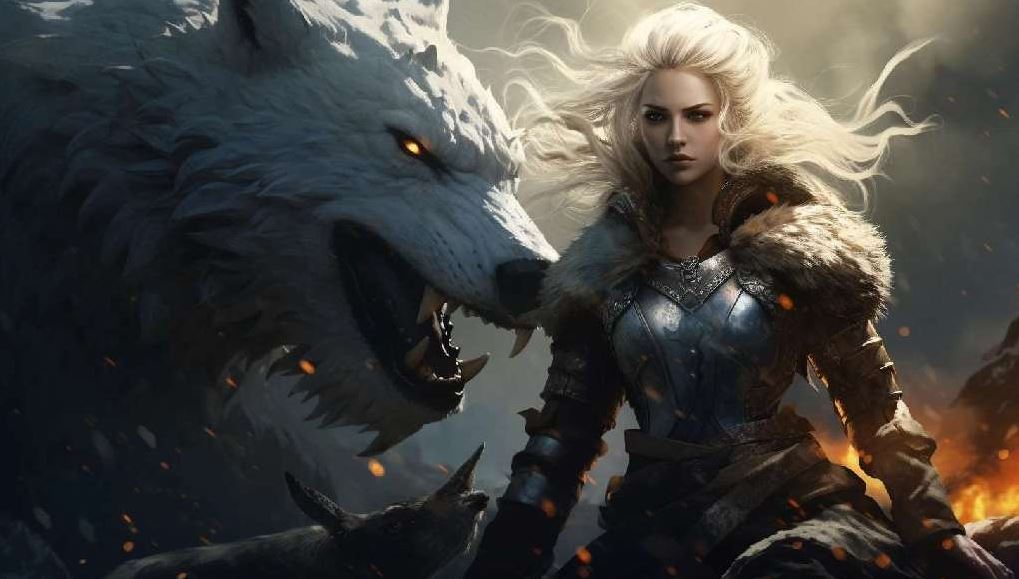
The mythical connection between Angrboda and Loki is a fascinating aspect of Norse mythology. Angrboda, a giantess, is known for being Loki‘s partner and mother to Fenrir, Jormungandr, and Hel. Their relationship symbolizes the link between chaos, destruction, and the forces of nature.
Angrboda’s role in the cosmic order is significant, although information about her in Norse religion remains limited. Her association with the character Gulveig-Heid further emphasizes her importance. Together, they embody the ongoing struggle between chaos and order in Norse mythology, while Angrboda’s portrayal as a powerful and rebellious figure resonates with both ancient lore and modern interpretations.
The Mythical Connection between Angrboda and Loki
The Role of Angrboda in Norse Mythology
The mysterious figure of Angrboda plays a vital role in Norse mythology. As a giganta, her significance goes beyond her relationship with Loki. While not much is known about her involvement in Norse religion, her presence in the cosmic order is undeniable.
Angrboda is commonly associated with malevolence, the instigation of conflicts, and the impending apocalypse, Ragnarok. The connection between Angrboda and the character Gulveig-Heid further underlines her importance in the mythological realm.
Angrboda and Loki‘s Relationship
Within Norse mythology, Angrboda is portrayed as one of Loki‘s wives or partners. Their union symbolizes the intricate link between chaos, destruction, and the forces of nature. However, Odin, the king of Norse gods, perceives Angrboda’s children as a threat to the stability and order of the world.
Consequently, Odin takes drastic measures to control them, leading to tension between Angrboda and Odin. This conflict reflects the perpetual struggle between chaos and order found throughout Norse mythology.
The Children of Angrboda and their Significance
In Norse mythology, Angrboda’s children hold great importance in shaping the fate of the cosmos. They embody the chaotic forces that challenge the established order of the Norse pantheon.
Fenrir: The Monstrous Wolf
Jormungandr: The Mighty Serpent
Jormungandr, also known as the World Serpent, is another child of Angrboda and Loki. This colossal serpent encircles the earth, ready to unleash its fury during Ragnarok. Its battle with Thor signifies the clash of opposing forces, representing the eternal struggle between chaos and order.
Jormungandr serves as a reminder of the immense power and unpredictability of nature.
Hel: The Goddess of the Underworld
Hel, born to Angrboda and Loki, rules over the realm of the dead. As the goddess of the underworld, she presides over those who didn’t die in battle and holds power over their fate.
Hel embodies the duality of life and death, and her role in Ragnarok highlights the cyclical nature of existence and the constant potential for rebirth.
Together, Fenrir, Jormungandr, and Hel represent the destructive and transformative forces in Norse mythology. Their existence challenges the gods and underscores the delicate balance between order and chaos in the cosmic order.
Angrboda’s Impact on Ragnarok and the Norse Pantheon
Angrboda, with her association with chaos and destruction, plays a significant role in the cataclysmic event known as Ragnarok, the battle of apocalypse in Norse mythology. This cosmic conflict signifies the end of the world as it is known and the subsequent rebirth of a new world.
As the mother of Fenrir, Jormungandr, and Hel, Angrboda’s children each have a crucial part to play in this momentous event.
Ragnarok: The Battle of Apocalypse
Ragnarok represents the ultimate clash between the forces of chaos and order, resulting in the destruction and subsequent renewal of the cosmos. This battle involves numerous gods, giants, and monstrous beings, including Fenrir and Jormungandr, the children of Angrboda.
It is foretold that Fenrir will ultimately slay Odin, the king of the gods, while Jormungandr will engage in a fateful confrontation with Thor, the god of thunder.
Angrboda’s Role in the Fate of Odin and Thor
Angrboda’s connection to her formidable children deeply affects the outcome of Ragnarok. Fenrir‘s destined showdown with Odin signifies the end of an era and the overthrow of established leadership. Jormungandr‘s clash with Thor symbolizes the battle between destructive forces and divine power.
Angrboda’s influence on these pivotal confrontations highlights her role in shaping the fate and destiny of the Norse pantheon.
Angrboda’s Symbolism of Chaos and Destruction
Angrboda’s association with chaos and destruction is not merely confined to her offspring’s participation in Ragnarok. Her very existence as a giantess embodies defiance against the established order. As a powerful and rebellious figure, she represents the destabilizing forces that challenge the gods’ dominance and influence.
Angrboda’s symbolism of chaos and destruction adds depth to the narratives of Norse mythology and reflects the eternal struggle between order and chaos.
Angrboda’s Representation and Influence in Popular Culture
Angrboda, the mythical giantess from Norse mythology, has left a lasting impact on popular culture, with her powerful and complex character being depicted in various forms of art and media. Her portrayal in literature, art, and film has captivated audiences, further shining a light on her significance in Norse mythology.
Angrboda in Literature, Art, and Film
Authors, artists, and filmmakers have drawn inspiration from Angrboda’s enigmatic persona, incorporating her into their works to explore themes of chaos, rebellion, and the destructive forces of nature. In literature, her presence has been felt in countless novels and poetry, offering a glimpse into her mysterious allure.
- Novels and Sagas: Angrboda’s character has been featured in numerous novels and sagas, either as a central figure or a subtle reference that adds depth to the narrative. These literary works delve into her relationships, her role in shaping the destinies of her children, and her connection with Loki and the gods.
- Poetry: Poets have been inspired by Angrboda’s fierce nature and role as a catalyst for chaos.
Her influence can be seen in poetic verses that explore the interplay between order and disorder, and the inevitable clash between forces of destruction and creation.
- Artistic Depictions: Artists have brought Angrboda to life through stunning visual representations.
Paintings, sculptures, and illustrations showcase her power, rebellious spirit, and connection to the natural world. These artistic interpretations provide a visual exploration of her character and the themes she embodies.
- Film and Television: Angrboda’s presence has even extended to the silver screen, with her character appearing in films and television series that delve into Norse mythology.
These adaptations bring her story to a wider audience, captivating viewers with her complex motivations and the impact she has on the gods and the world.
Angrboda’s Philosophical and Social Justice Interpretations
Angrboda’s representation has also sparked philosophical and social justice discussions, examining her character through various lenses and interpreting her significance in different ways.
- Philosophical Considerations: Philosophers have analyzed Angrboda’s role as a symbol of chaos and destruction, exploring her broader implications for the human condition. They delve into the philosophical concepts of order versus chaos, rebellion against oppressive structures, and the inherent power within the forces of nature.
- Social Justice Perspectives: Angrboda’s portrayal as a powerful and rebellious figure has resonated with social justice movements.
Her character is often interpreted as a symbol of resistance against oppressive systems, encouraging discussions about power dynamics, gender roles, and the importance of embracing diverse perspectives.
Angrboda’s representation in popular culture not only highlights her captivating persona but also offers a deeper understanding of the themes she embodies.
Through literature, art, film, and philosophical interpretations, Angrboda’s influence permeates modern society, encouraging exploration of the complex interplay between chaos, destruction, rebellion, and the lasting impact of such forces.
The Legacy of Angrboda in Norse Mythology and Modern Society
Angrboda as a Powerful and Complex Figure
Angrboda, the enigmatic giantess of Norse mythology, remains a powerful and complex figure whose presence reverberates through the ages. Represented as a pivotal character in the cosmic order, she embodies the forces of chaos, destruction, and rebellion.
Angrboda’s significance lies in her role as the mother of Fenrir, Jormungandr, and Hel, each representing untamed power in their own right. Her association with Gulveig-Heid heightens her importance, solidifying her status as a formidable and influential figure in Norse lore.
Exploring Themes of Power and Rebellion
The narrative surrounding Angrboda and her offspring delves deep into the realms of power dynamics and rebellion. The gods perceive her children as monstrous and dangerous, representing a threat to their established order.
This dynamic highlights the eternal struggle between those who seek to maintain control and those who challenge the status quo. Angrboda’s defiance against the gods and interference with their plans underscores the enduring theme of rebellion and the threat it poses to existing power structures.
- The gods’ perception of Angrboda’s children as threats to stability
- Angrboda’s defiance against the gods’ control
- The clash between order and chaos
Angrboda’s Resonance in the Understanding of Norse Mythology
The portrayal of Angrboda as a powerful and rebellious figure plays a vital role in deepening our understanding of Norse mythology.
Through her association with chaos, destruction, and the impending Ragnarok, Angrboda represents the inherent unpredictability and uncontrollable forces present in the cosmos. Her presence challenges the conventional perception of gods and their domain, offering a more nuanced perspective of the Norse pantheon.
As scholars, artists, and enthusiasts continue to explore and interpret Norse mythology, Angrboda’s symbolism and impact ensure her enduring place in the collective consciousness….











